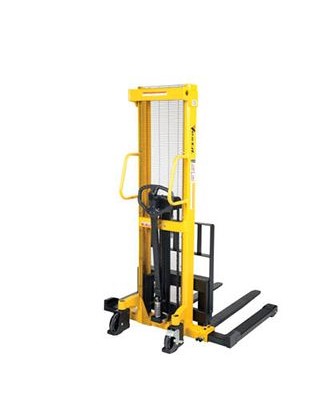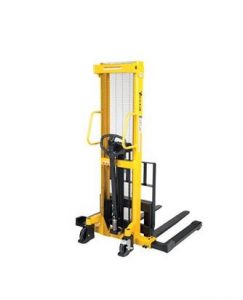Adding Hydraulic Forklift Functions
What is a hydraulic forklift function?
Hydraulic functions are essentially attachments that add not only the value of the forklift but also to its versatility. Also known as ‘valves’, hydraulic functions deliver a lever near the operator which provides two passages of pressurized hydraulic oil required in order to power the attachment features.
Under certain circumstances an attachment has more features than your forklift has hydraulic functions, meaning one or more need to be added to the machine. When operators add a valve or hydraulic function, there are a number of avenues to pursue in order to find the hydraulic function you are looking for. Unfortunately, that is the easy part. What is the hard part? Adding valves and hose routing accessories to forklifts is usually very expensive.
There is always an alternative, of course, and in this particular instance, there is a solution where operators add a solenoid valve in conjunction with a hose or cable reel that diverts oil flow from an existing function. While this practice has been used successfully in the past, the problem is hose and cable reels can block the operator’s view and are frowned upon by a vast number of experts as being problematic. One remedy to this problem is the Ditto Valve kit which uses a solenoid valve and special HydWire hoses where the wire reinforcing braid doubles as an electrical conduit. As a result, these hoses replace those already on the forklift, nesting in the original reeving and ultimately keeping the forklift safe from damage as well as out of the operator’s field of vision.
In order to add forklift attachments, it is important to consider the specifics of the forklift before adding any type of attachment. What your lift truck is capable of handling attachment speaking varies depending on the make and model. It also depends on other factors in the equation including the cab type, weight capacity, and previous hydraulic functions. In the end, it is the goal of the operator to add attachments without lowering the safety of the forklift by reducing its safe lifting capacity.*
Let’s examine some types of hydraulic forklift attachments or valves:
Side Shifter
The Side Shifter not only sounds cool but also makes your job much easier. The side shifter allows the forks to move laterally allowing for an easier loading phase. It is one of the most popular hydraulic functions available.
Fork Positioner
The fork positioner is a hydraulic attachment that allows the forks to move together or move apart.
Telescopic Forks
Another popular hydraulic function, telescopic forks enable the operator to stack pallets ‘warehouse-style’.
Roll and Barrel Clamp Attachment
The roll and barrel clamp attachment is a hydraulic function used to grasp items such as barrels. However, unlike the other valves roll and barrel clamps are also sometimes mechanical, not necessarily strictly limiting them to a hydraulic function.
*NOTE: The only sure way to determine the safe lifting capacity of the forklift is to contact the manufacturer of the forklift. Many people use the safe lifting capacity guide that the manufacturer of the accessory issues, however, this may not always be accurate.


